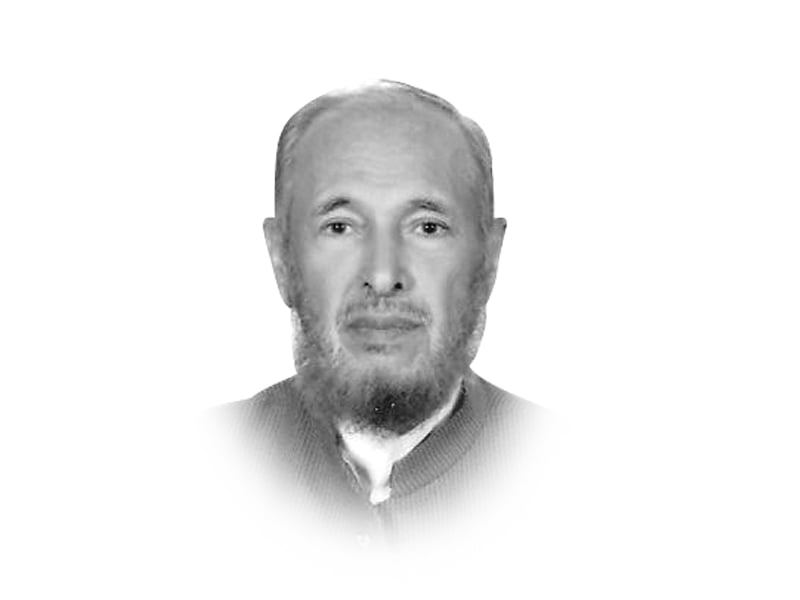
Defence ministers from NATO member states held an important meeting last week — the first since Joe Biden assumed power in the US. The conference was significant because during Trump’s presidency, the US-NATO relations had been strained as the former president was not willing to continue to bear the burden of financing military campaigns around the world.
One of the important issues that the conference was deliberating upon was the withdrawal of foreign forces from Afghanistan. The US-Taliban deal of February 2020 envisaged the departure of all foreign forces from the country by May this year in return for the Taliban agreeing to sever all links with terrorist organisations such as Al Qaeda.
The two-day conference of NATO defence ministers did not commit the organisation to any withdrawal of forces. NATO currently has about 8,000 troops in Afghanistan in addition to 2,500 US troops. There are an estimated 15,000 contractor forces deployed in the country besides the CIA-sponsored militias.
The virtual conference reaffirmed its faith in the ongoing talks between the Taliban and Afghan government. Secretary General Jens Stoltenberg said the organisation “will continue to closely consult and coordinate in the coming weeks”. He insisted that the Taliban must live up to the commitments under the deal with the US including making progress in peace talks with Kabul, reducing violence and cutting ties to international terrorist groups. The Secretary General went on to add, “NATO’s goal is to ensure that Afghanistan never again becomes a safe haven for terrorists that would attack our homeland.”
One conclusion that can be drawn from the NATO consensus is that foreign forces may not be pulled out by the deadline stipulated in the US-Taliban deal. It has not given any indication of how long it would take or under what conditions the forces could be withdrawn. In other words, it has its options open on how to deal with the emerging scenario. The idea is to pressure the Taliban to move fast on to reconciliation by showing more flexibility on some key issues. At the same time NATO wanted to put pressure on the Taliban to reduce attacks on government forces. The underlying objective was to convince the Taliban that foreign forces would not just leave for the group to march on to Kabul.
The NATO decisions would put the Taliban under immense pressure. The talks in Doha were in a stalemate until this week. The two sides had not held any negotiations for more than a month. Had the talks been suspended, it would have come as a shock to all those who had pinned their hopes for a breakthrough that could possibly lead to ending the long conflict.
The deal that was struck with the US in February 2020 required both sides to exchange prisoners. That has been done. The agreement also committed the Taliban to not launch attacks on foreign forces. That commitment has been honoured so far by the Taliban. The deal also required both sides to create an environment for peace talks between the Afghan government and the Taliban. The talks started in September last year and are continuing with no significant outcome so far.
As far as reducing violence is concerned, that is a vague term and cannot be delinked from the overall ups and downs of the conflict. Because each side – the Afghan government and the Taliban – is eager to create more space for themselves at the expense of the other. It is not possible to measure a response to an assault launched by either the Taliban or the government forces. The Taliban also have their cadres to think of. Any deliberate reduction in attacks when such assaults are warranted for reasons of security or strategy would, the Taliban believe, send misleading signals to their volunteers. For the same reasons the group is opposed to any ceasefire option because it believes it will be difficult to recall their supporters to fight in case the ceasefire does not deliver any resolution to the conflict. Because they think once volunteers go back to their villages and lose motivation, it is not easy to recall them and make them fight.
Whatever happens it is now clear that the May deadline for the withdrawal of foreign forces will most likely not be met. It is in this context that the Taliban would be reconsidering their response to the evolving situation.
What is intriguing is that the benefit of a long stalemate in talks would go to those who have been obstructing any convergence of ideas for resolving the conflict — the Afghan government of Dr Ashraf Ghani. Far from being held accountable for the lack of progress in talks the failed peace process would come as a boom to Ghani’s government. Because in case of any settlement the present dispensation in Kabul will have to wind up and cede space for a multi-ethnic, broad-based government of which the Taliban are a part.
Nato was not expected to ignore the causes of the talks not delivering so far. It appears rather a perfunctory assessment based on the visible causes of a complex stalemate have led the organisation to formulate a response that may not help in bringing about a reconciliation and an end to the war.
There is still time to repair the damage. What needs to be done after all these talks and the manipulations of the Kabul government is to move fast on the scheme of installing a transitional government being created by the time-honoured Afghan institution of a Loya Jirga or Grand Assembly. The alternative to a clear action plan that is steeped in the values and norms of the people and reflects their aspirations and ground realities, would be the country descending into chaos with more violence, more loss of life and more destruction.











1732012115-0/Untitled-design-(14)1732012115-0-270x192.webp)
1736844405-0/Express-Tribune-(2)1736844405-0-270x192.webp)






COMMENTS
Comments are moderated and generally will be posted if they are on-topic and not abusive.
For more information, please see our Comments FAQ